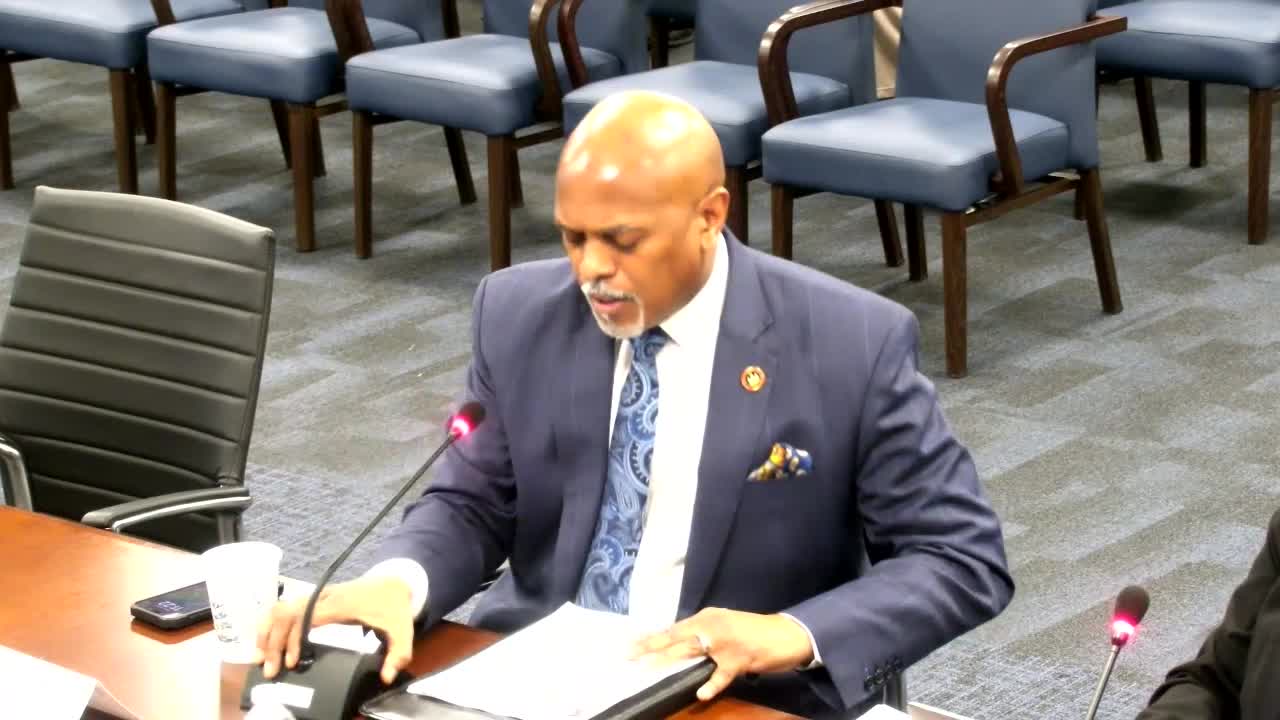County and state leaders call for coordinated plan to attract commercial investment, update master plans and address regulatory barriers
April 22, 2025 | Prince George's County, Maryland
This article was created by AI summarizing key points discussed. AI makes mistakes, so for full details and context, please refer to the video of the full meeting. Please report any errors so we can fix them. Report an error »

State and county officials used the April 22 General Assembly Committee meeting to press for closer coordination on economic development, master-plan updates and regulatory changes to attract commercial investment to Prince George’s County.
Senator Ron Watson and Delegate Nicole Williams told council members that Maryland’s regulatory environment and unresolved master-plan and zoning issues have contributed to development flowing to neighboring counties. “Commercial development takes the path of least resistance,” Watson said, urging a joint effort to identify barriers and best practices the county can adopt to compete regionally.
Council members and the delegation discussed several recurring themes:
- Master plans and zoning: Council members noted that some subregion master plans have not been updated in decades; they asked the delegation to help coordinate state-level support and to invite the new Secretary of Commerce for a district tour.
- Incentives and tax tools: Delegation members said the governor proposed tax credits and other incentives for technology and industry, but the delegation had to limit some proposals given the state’s budget constraints. The county and delegation discussed using targeted credits and partnerships with universities to attract firms such as IONQ and other advanced-technology companies.
- Data centers and energy policy: Senator Watson and others raised capacity and grid concerns as older generation plants retire (he referenced Brandon Shores and Wagner) and noted the need to balance clean-energy goals with ratepayer impacts and grid reliability. The delegation discussed battery storage, backup generation, and potential procurement pathways for small modular nuclear technology as part of energy planning.
- Affordable housing and the Blueprint: Delegation members said statewide formulas indicated Prince George’s County has a large share of the state’s housing need and cautioned that the county must define the type and location of new housing it will accept while protecting school funding and other services.
Several council members emphasized the county’s need for more market-rate commercial development in addition to affordable housing. “We will never get out of the hole that we continue to build without market rate and commercial and industry development,” Council Member Sydney Harrison said during the committee exchange.
The delegation and council agreed to expand year-round interim coordination. Council members requested the delegation’s list of lobbyists and asked for invitations to relevant state briefings from agencies such as the Department of Permitting, Inspections and Enforcement (DPIE) and the Maryland-National Capital Park and Planning Commission so council staff and members can attend or receive recordings.
Ending: The committee said it will create an interim schedule of briefings and provide a “cheat sheet” for potential local tax options, while the delegation offered to assist with research, tours and staff contacts to support a coordinated economic-development strategy.
Senator Ron Watson and Delegate Nicole Williams told council members that Maryland’s regulatory environment and unresolved master-plan and zoning issues have contributed to development flowing to neighboring counties. “Commercial development takes the path of least resistance,” Watson said, urging a joint effort to identify barriers and best practices the county can adopt to compete regionally.
Council members and the delegation discussed several recurring themes:
- Master plans and zoning: Council members noted that some subregion master plans have not been updated in decades; they asked the delegation to help coordinate state-level support and to invite the new Secretary of Commerce for a district tour.
- Incentives and tax tools: Delegation members said the governor proposed tax credits and other incentives for technology and industry, but the delegation had to limit some proposals given the state’s budget constraints. The county and delegation discussed using targeted credits and partnerships with universities to attract firms such as IONQ and other advanced-technology companies.
- Data centers and energy policy: Senator Watson and others raised capacity and grid concerns as older generation plants retire (he referenced Brandon Shores and Wagner) and noted the need to balance clean-energy goals with ratepayer impacts and grid reliability. The delegation discussed battery storage, backup generation, and potential procurement pathways for small modular nuclear technology as part of energy planning.
- Affordable housing and the Blueprint: Delegation members said statewide formulas indicated Prince George’s County has a large share of the state’s housing need and cautioned that the county must define the type and location of new housing it will accept while protecting school funding and other services.
Several council members emphasized the county’s need for more market-rate commercial development in addition to affordable housing. “We will never get out of the hole that we continue to build without market rate and commercial and industry development,” Council Member Sydney Harrison said during the committee exchange.
The delegation and council agreed to expand year-round interim coordination. Council members requested the delegation’s list of lobbyists and asked for invitations to relevant state briefings from agencies such as the Department of Permitting, Inspections and Enforcement (DPIE) and the Maryland-National Capital Park and Planning Commission so council staff and members can attend or receive recordings.
Ending: The committee said it will create an interim schedule of briefings and provide a “cheat sheet” for potential local tax options, while the delegation offered to assist with research, tours and staff contacts to support a coordinated economic-development strategy.
View full meeting
This article is based on a recent meeting—watch the full video and explore the complete transcript for deeper insights into the discussion.
View full meeting
